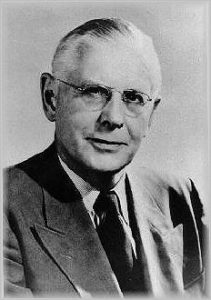Over 100 years ago, residents of Minesing got together to found their own community skating rink. Over almost 40 years, Minesing’s Princess Rink served as a hub for winter sports and social life for the small rural community, a venue for community skates and impassioned amateur hockey games and a training ground for one of the best hockey players of the early 1900s.
The story of the Princess Rink began in Minesing one morning in early November 1901, when four local men, Harry Stokes, Joseph Orchard, Charles Foyston and Thomas McLean, got together to found a community skating rink and set about finding a suitable location and adequate money to make their idea a reality.
The four men approached local farmers and managed to convince twenty of them to each advance $10 for the purpose of founding the rink, repayable at 4% interest within ten years. In December 1901, a location for the new rink was leased from another local man, Andrew Ronald, for 99 years for a nominal rent. Ronald’s only other condition for the lease was that no liquor was to be sold on the premises.
The Princess Rink was constructed through a series of work bees attended by many of the men of the community, under the direction of the respected barn framer Jesse Kester. The completed rink measured 40 by 120 feet, with a 40- by 100-foot ice surface and a 20-foot section at the front for putting on skates and observing hockey games. The new rink opened on the night of January 20, 1902.
The Princess Rink was always well attended, especially during evening skates, when bands from Minesing, Barrie, Craighurst or Stayner offered live performances for skaters. The rink also hosted a multitude of lively hockey games between the Minesing “Greenshirts” and other small-town teams – Elmvale was an arch-rival, and there were frequent brawls, often involving the spectators as well as the players. Visiting bands and hockey teams were all provided with a hot supper at the end of the evening. Evening skates were limited to three nights a week so as not to interfere in locals’ attendance at church and other social events. Despite good attendance at the rink, income from evening skates was fairly poor as tickets cost only ten cents each.
For the first few years, management was plagued by the issue of lighting the rink properly. Initially, coal oil lamps were used, then, in 1904, a 1200-candle-power gas lamp was installed, which provided sufficient light but also greatly increased the chances of setting fire to the building. On one occasion, the lamp suddenly exploded in the middle of an evening skate, causing those in attendance to flee the rink. Fortunately, no one was hurt and there was no damage to the building, though presumably the incident spelled the end for that particular lamp.
Harry Stokes, Joseph Orchard, Charles Foyston and Thomas McLean owned the rink jointly until 1906, when Stokes sold his interest to the remaining three owners. In 1908, Foyston and McLean moved to California, leaving management of the rink solely to Orchard until he, too, left the community in 1912. Harry and Carlin Foyston managed the rink until 1938, when Joseph orchard briefly resumed control of the establishment. In 1940 it was sold to Fred Parry, who found that it had become unsafe for further use and had it taken down.
One of the graduates of the Princess Rink was Frank Corbett Foyston, also known as “The Flash”, considered one of the best hockey players of the early 1900s.
Foyston, one of six brothers, was born and raised in Minesing and began playing hockey on the frozen pond on his family’s farm. The Princess Rink opened shortly before Foyston’s tenth birthday and quickly became his new venue for practicing hockey. Foyston joined the Minesing Greenshirts at age 15, and moved up to the Barrie Colts in 1909. Twice a week, he would travel the ten miles to Barrie from Minesing in a horsedrawn cutter, regardless of the weather.
Foyston’s career in the National Hockey Association began in 1912. Over the next 17 years until his retirement in 1929, he played for the Toronto Blueshirts (the forerunner of the Maple Leafs), the Seattle Metropolitans, then the Victoria Cougars, and helped win the Stanley Cup for each of those teams. After his retirement, he coached the Seattle Seahawks until his death in 1966. He was inducted into the Hockey Hall of Fame in 1958, the Barrie Sports Hall of Fame in 1999, and the Springwater Sports Heritage Hall of Fame in 2014.
